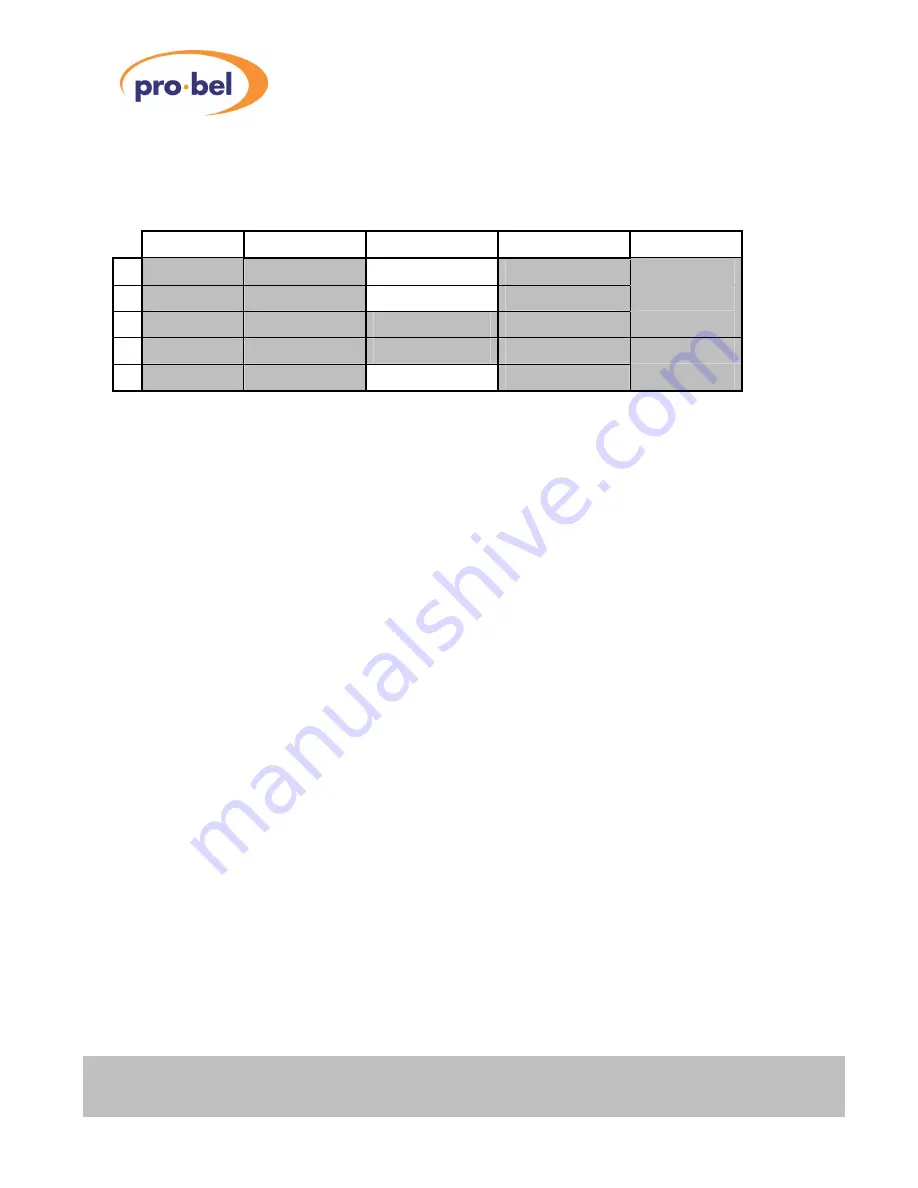
VISTEK V1667, V1667/SY & V1667/SY-VHS
12-bit pal/ntsc to sdi adaptive
comb filter decoder
18
Issue 3
8.3.2
Parameter Selection and Adjustment
This table shows all the adjustable
Parameters
in each
Page
when in VHS decode mode.
Top Page
Page 1 (SIG)
Page 2 (TIM)
Page 3 (ANC)
ENG.
A
V Timing
B
H Timing
C
D
E
Timing Reset
There are
NO
adjustable parameters within the
top page
of VHS front panel operation (ie video gain,
chroma gain, setup and phase are not selectable or adjustable). The VHS decoder chip has been forced into
Automatic Gain Control (AGC) and Automatic Chrominance Gain Control (ACGC) modes, hence these
picture adjustments are not available.
To enter the
timing page
of VHS front panel operation follow the procedure described in Section
5.1 Timing
Page Entry
.
There are two adjustable parameters within the
timing page
of VHS front panel operation. These are V
timing offset and H timing offset. Adjustment ranges for these two parameters are the same as in normal
(broadcast) decode mode.
8.4
An Introduction to Vislock Processing
8.4.1
What is VisLock?
Vislock is a patented method of converting an NTSC composite analogue signal to serial digital form then
subsequently re-converting back to NTSC with negligible loss of picture quality. This enables digital and
analogue plant to be mixed in a high quality installation.
8.4.2
How does it work?
When a composite NTSC signal is decoded it is split into its luminance and colour difference components.
This process is never perfect, even using the highest quality decoders, and in practice some of the
luminance picture information passes into the colour difference path. This results in spurious colour effects
known as cross-colour. Also, some of the subcarrier used to convey the colour information in the original
NTSC inevitably passes into the decoded luminance. This may appear as a moving dot pattern on vertical
edges of coloured areas or “hanging dots” on horizontal edges.
After repeated decoding and re-encoding processes these effects increase, and the final signal may suffer
significant loss of both luminance and chrominance resolution.
In the decoder the Vistek VisLock system embeds subliminal data information into its serial digital output.
This data passes with the video signal to downstream encoders and provides them with information about
the original NTSC signal. By using this information the encoder can re-assemble the NTSC signal exactly in
the same way as it was separated.
















